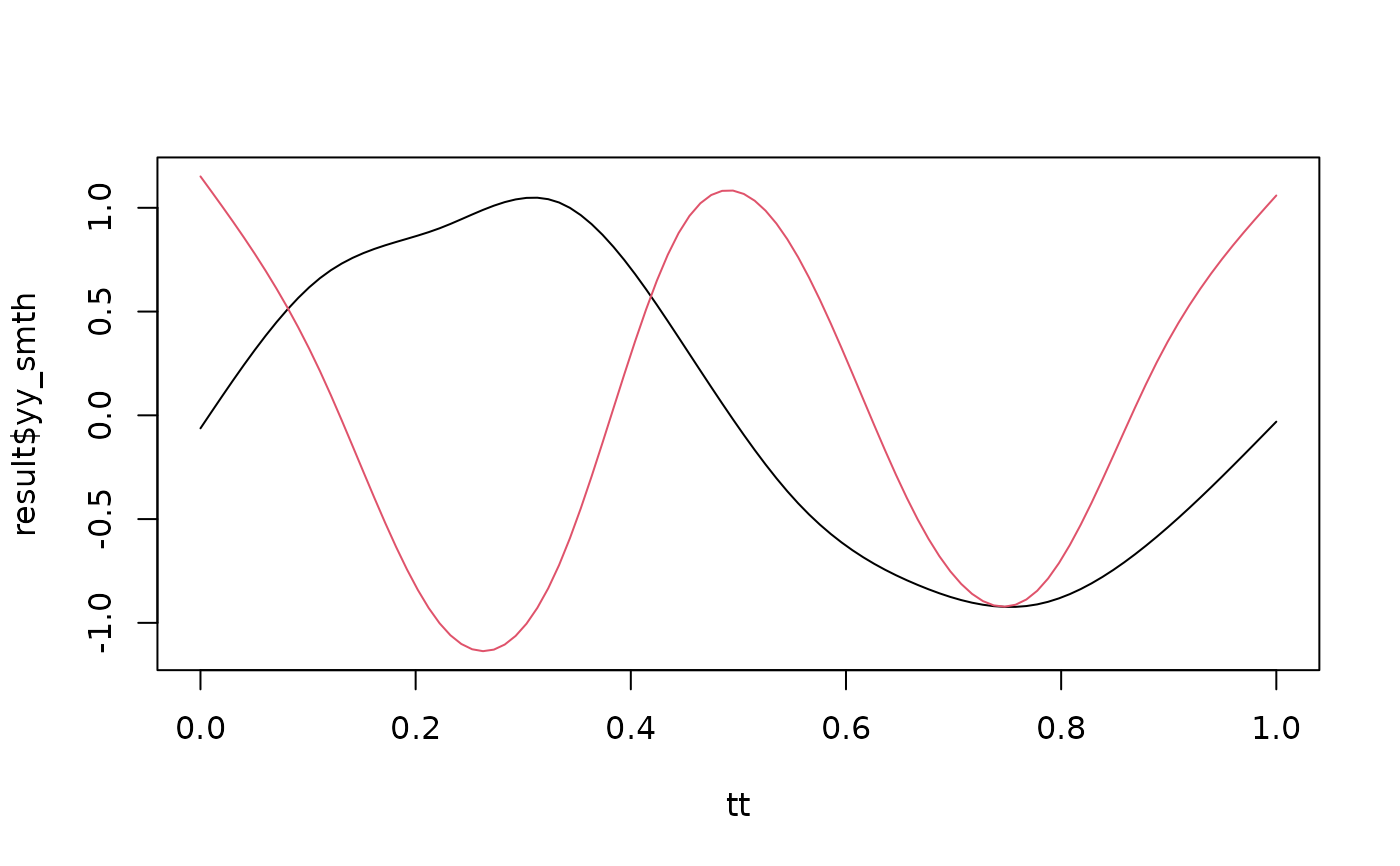Computes smoothed trajectories and their derivatives using cubic smoothing splines. This function serves as Step 1 in the Kernel ODE pipeline.
Arguments
- Y
A numeric matrix of dimension (
n,p), where each column corresponds to the observed trajectory of a variable. Rows align withobs_time.- obs_time
A numeric vector of length
nrepresenting observation time points.- tt
A numeric vector representing a finer time grid used for evaluating the smoothed trajectories and their derivatives.
Value
A list with components:
yy_smthA numeric matrix of dimension (
length(tt),p), where each column contains the smoothed trajectory of a variable evaluated ontt.init_vals_smthA numeric vector of length
pcontaining the estimated initial values (at time 0) for each variable.deriv_smthA numeric matrix of dimension (
length(tt),p), where each column contains the smoothed first order derivative of a variable evaluated ontt.
References
Original implementation adapted from https://github.com/ChenShizhe/GRADE
Examples
# Example usage:
set.seed(1)
obs_time <- seq(0, 1, length.out = 10)
Y <- cbind(sin(2 * pi * obs_time), cos(4 * pi * obs_time)) + 0.1 * matrix(rnorm(20), 10, 2) # each col is a variable
tt <- seq(0, 1, length.out = 100)
result <- kernelODE_step1(Y = Y, obs_time = obs_time, tt = tt)
matplot(tt, result$yy_smth, type = "l", lty = 1, col = 1:2)
